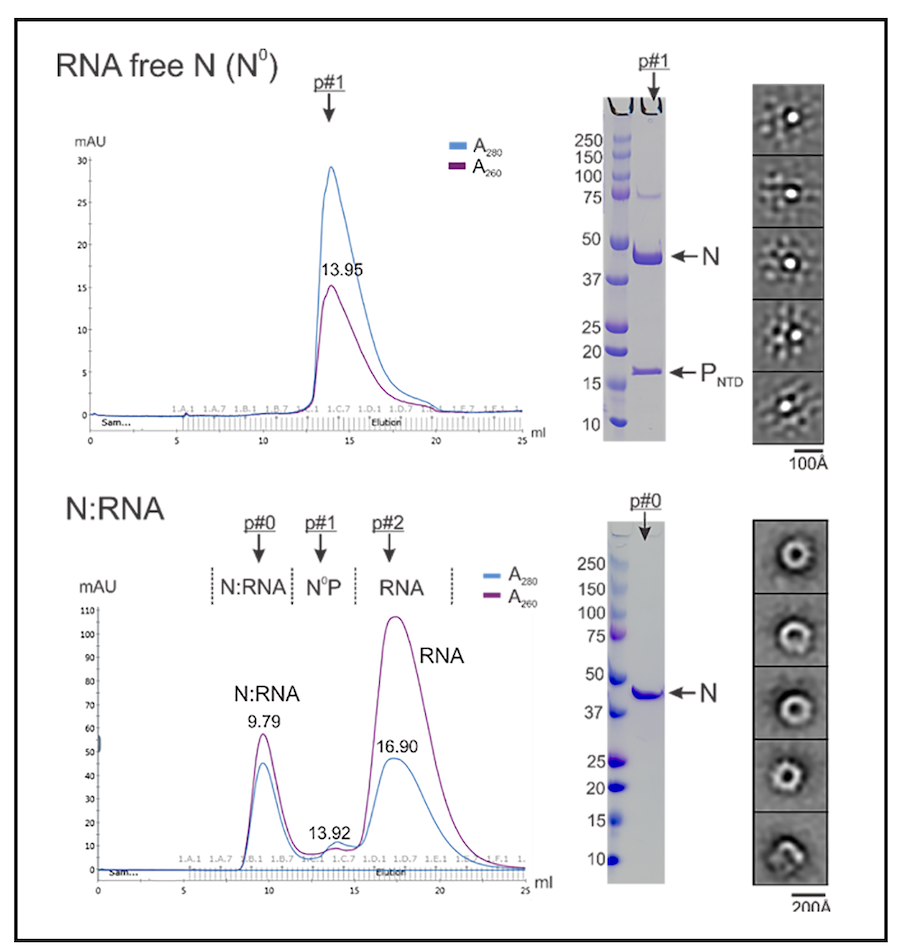
Establish in vitro RSV RNA synthesis nucleocapsid platform
Despite the evident importance of RNA synthesis by NNS RNA viruses, an in-depth mechanistic understanding is lacking. The lack of a tractable in vitro nucleocapsid has hindered the field as a cognate RNA template for the polymerase activities. As highlighted below, the polymerase template is not naked RNA, but rather a helical nucleocapsid (NC, N:RNA), formed by viral RNA that is tightly encapsidated by the nucleoprotein (N). Each RSV N coats 7 nucleotides (nts). As a result, the entire RSV genome (A2 strain, 15,222 nts) requires more than 2,100 copies of N for coating. We hypothesize that the RNA promoter sequence, together with the 3′ end of NC’s tertiary structure, is vital for RNA synthesis. The polymerase must first recognize the 3′ NC helical structure, displace the first few N molecules from NC and interact with the RNA promoter at the proximal 3’ terminus of the genome to initiate RNA synthesis. The successful reconstitution of the NC with essential RNA cis-acting elements is critical for the polymerase to engage the RNA template for RNA synthesis. While polymerase itself has been reconstituted in vitro, its biologically relevant N:RNA template poses a major technical hurdle, mainly because the N protein binds non-specifically to cellular RNAs to form nucleocapsid-like particles (NCLP). The primary objective of this project is to overcome this critical barrier and provide novel mechanistic insights into the NNS RNA synthesis machinery. We expect to fill this gap by designing and reconstituting an RSV mini-nucleocapsid (mini-NC) in vitro system.



